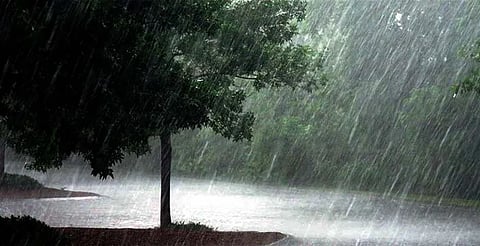
- Home
- Live Blog
- Breaking News
- Top Headlines
- Cities
- NE News
- Sentinel Media
- Sports
- Education
- Jobs

CORRESPONDENT
SHILLONG: Meghalaya is witnessing an alarming shift in its monsoon pattern, recording a 43 per cent rainfall deficit this South East Monsoon season spanning June to September. While the state normally receives 2,695.3 mm of rainfall, only 1,544.9 mm was recorded this year, signalling one of the driest seasons in recent memory. Amid this overall deficit, South West Khasi Hills emerged as an exception, receiving 3,030 mm of rainfall — 64 per cent above normal, where the standard rainfall is 1,851.6 mm.
Thangjalal Lhouvum, Head of the Meteorological Centre in Shillong, remarked, “For the past many years now rainfall seems to be on a decreasing trend; even this year the heaviest rainfall region, mainly Sohra and Mawsynram, received one of the lowest rainfalls.”
East Khasi Hills recorded a 31 per cent deficit, while Ri Bhoi district saw 43 per cent less rainfall than normal. West Garo Hills and West Khasi Hills registered 51 per cent and 50 per cent deficits, respectively. Lhouvum further noted, “This year rainfall was much less compared to the normal climatology… There was very little rainfall in the Northeast, especially in Meghalaya.”
The state is also grappling with rising temperatures. “As for temperature, we have been seeing record-breaking temperatures for the last five to ten years; especially last year, it was very high. We can say that rainfall is decreasing and temperature increasing,” Lhouvum added. All Garo Hills districts are experiencing higher maximum temperatures, while Sohra — among the state’s three IMD stations — continues to break records with consistent heat.
Other districts also faced stark deficiencies: West Jaintia Hills recorded a massive 75 per cent deficit, East Jaintia Hills and North Garo Hills 60 per cent, and South West Garo Hills 64 per percent. In contrast, East Garo Hills and South Garo Hills experienced near-normal rainfall, highlighting the extreme regional variation in this year’s monsoon.
Also Read: NGCO Slams Years of Delay in Completion of Key Garo Hills Projects, Demands Urgent Government Action